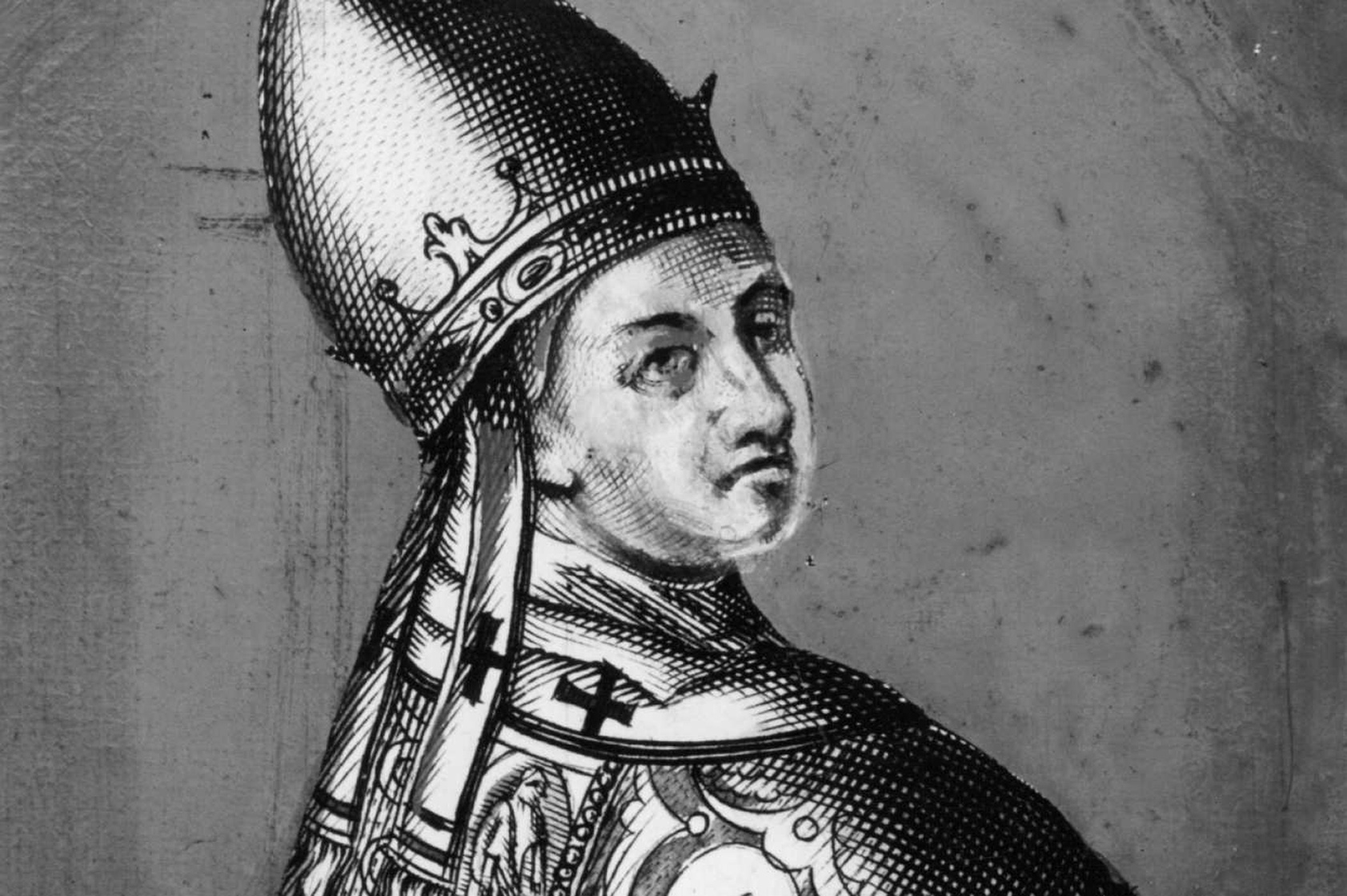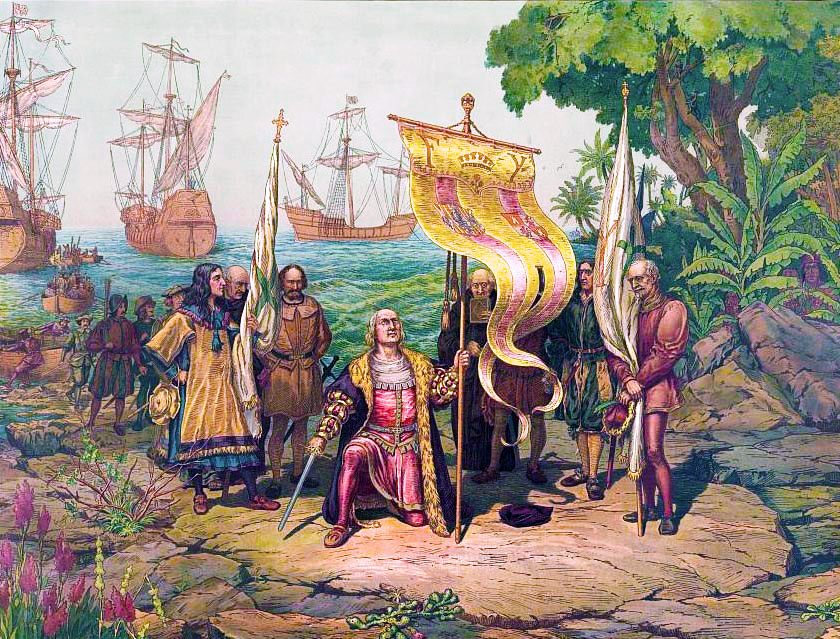The 10th and 11th centuries were plagued with treachery, foul play and political machinations in the Papacy. The two most scandalous Popes in that era were John XII and Benedict IX. Both men assumed the Throne of Peter at an early age and turned the Vatican into the most unholy of places.
John XII
John XII reigned from 955-964. He was born Octavianus, the son of Alberic II of Spoleto, a Patrician and self-styled Prince of Rome. Through his mother Alda of Vienne, John XII was a seventh generation descendant of Charlemagne. Sometime before his death in 954, Alberic administered an oath to the Roman nobles in St. Peter’s providing that the next vacancy for the papal chair would be filled by his son Octavianus, who by this stage had entered the Church. With his father’s death and without any opposition, he succeeded his father as Princeps of the Romans. His age at the time is believed to be 18. With the death of Pope Agapetus II in November 955, Octavianus was elected his successor. Right from the start, he addressed secular issues under the name Octavianus, while all matters relating to the Church were under his Pontifical name John, showing early on that he had no problem separating his role as leader of the Church with his life as a sexually obsessed young man. John XII was quickly deemed to be lazy, childish and irritable when he did not get his way. Harsher accusations followed from his critics, who included priests and religious authorities. While John was the temporal and spiritual ruler of Rome during his Pontificate he virtually turned it into a brothel and moral corruption in Rome became a major problem.
One need only read the charges against him at the Synod of Rome in 963 to realize the extent of his indiscretions, beginning with the lesser ones.
“The cardinal priest Peter testified that he himself had seen John XII celebrate Mass without taking communion… He ordained a deacon in a horse stable…He had been paid for ordaining bishops, specifically that he had ordained a ten-year-old bishop in the city of Todi… They testified about his adultery, which they did not see with their own eyes, but nonetheless knew with certainty. He had fornicated with the widow of Rainier, with Stephana, his father’s concubine, with the widow Anna and with his own niece. He made the sacred palace into a whorehouse. He had blinded his confessor Benedict and thereafter Benedict had died. He had killed John, cardinal subdeacon, after castrating him. All, clerics as well as laymen, declared that he had toasted to the devil with wine. They said when playing at dice, he invoked Jupiter, Venus and other demons. They even said he did not celebrate Matins at the canonical hours, nor did he make the sign of the cross.”
One historian in describing John XII wrote, “This abominable priest soiled the chair of St. Peter for nine entire years and deserved to be called the most wicked of popes.” Quite an indictment.
The kindest description of his Papacy wrote, “John’s princely instincts were stronger than his taste for spiritual duties and the two natures – that of Octavian and that of John the Twelfth – stood in unequal conflict. Called as he was in the immaturity of youth to a position which gave him claims on the reverence of the world, his judgment deserted him and he plunged into the most unbridled sensuality.’
With so much of his energies devoted to carnal pleasures, who would have guessed that he had time for political intrigues as well? After crowning Otto I Emperor of Germany to secure his support in a war against Berengar II of Italy, he changed his mind and began communicating with Berengar. Otto learned of the Pope’s treachery and returned to Rome after defeating Berengar. He called a council which deposed John, who, fearing for his life, had gone into hiding in the mountains. Otto had Leo VIII elected in his place. John, with a large group of supporters, returned to Rome to depose Leo VIII. This did not go over with Otto, but before the matter went any further, John died. His reign as Pope ended in his late 20s. He either he died from a stroke, while in bed with a married woman (the kind version), or he was killed by the woman’s jealous husband (the more likely scenario).
Benedict IX
Benedict IX reigned from 1032-1048. He was last of the Popes from the powerful Tusculani family and was by far the worst. He was notorious for selling the Papacy and then reclaiming the office twice. He was Pope from 1032 to 1044, again in 1045 and finally from 1047 to 1048. He is the only man to have served as Pope for three discontinuous periods.
The son of Count Alberic of Tusculum, he was the nephew of two previous Popes, Benedict VIII and John XIX. While still a youth, he was thrust into the Papacy by the Tusculani in 1032, although he had few qualifications. To consolidate his power and on the advice of his family, Benedict promptly excommunicated any ecclesiastical leaders who were hostile to him, but over time, his violent and immoral conduct ultimately provoked the Romans to insurrection!
St. Peter Damian described him as “feasting on immorality” and “a demon from hell in the disguise of a priest.” In the Liber Gomorrhianus, a treatise on Papal corruption and sex, Benedict IX was accused of routinely engaging in homosexuality and bestiality. He was also accused by Bishop Benno of Piacenza of “many vile adulteries and murders.” Pope Victor III referred to “his rapes, murders and other unspeakable acts. His life as a Pope so vile, so foul, so execrable, that I shudder to think of it.” Quite an indictment!
After 12 years on the throne, Church leaders could not stand it any longer. Rumors of his behavior were rampant and his indiscretions were becoming even less discreet. The sentiment in Rome was that Benedict had to go, one way or another. Benedict fled Rome to gain time to evaluate his opportunities. In January 1045, Bishop John of Sabina was elected to succeed him as Sylvester III. But Sylvester was quickly driven out by Benedict’s brothers. Benedict reassumed control, but only for one month. He sold the Papacy to his godfather, Giovanni Graziano, a Roman priest, allegedly for 1,450 lbs. in gold. It is unknown who raised the money to buy off Benedict. Graziano, known as an honest and pious man, is believed to have taken this action to save the Holy See from Benedict’s scandalous conduct; he became Pope Gregory VI in May, 1045.
In the following year, both Benedict and Sylvester returned to Rome, each denouncing Gregory as Pontiff and each claiming to be Pope. None of the three was favored at the Council of Sutri, held by Henry III of Germany in December 1046, but it was decided that Sylvester was declared a false claimant. He was imprisoned, Benedict was deposed and Gregory was charged with simony, deprived of the Papacy and replaced by the Saxon Bishop Suidger of Bamberg as Clement II. After Clement’s death in October 1047, Benedict reappeared in Rome and installed himself as Pope on November 8. Finally, on July 17, 1048, Boniface of Tuscany, by order of Henry, drove Benedict from Rome and replaced him with Bishop Poppo of Brixen as Damasus II. Benedict was never seen in Rome again. He is supposed to have lived until 1055 or 1056, at the monastery of Grottaferrata.





